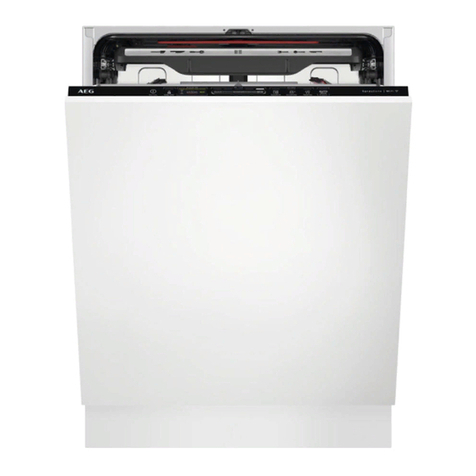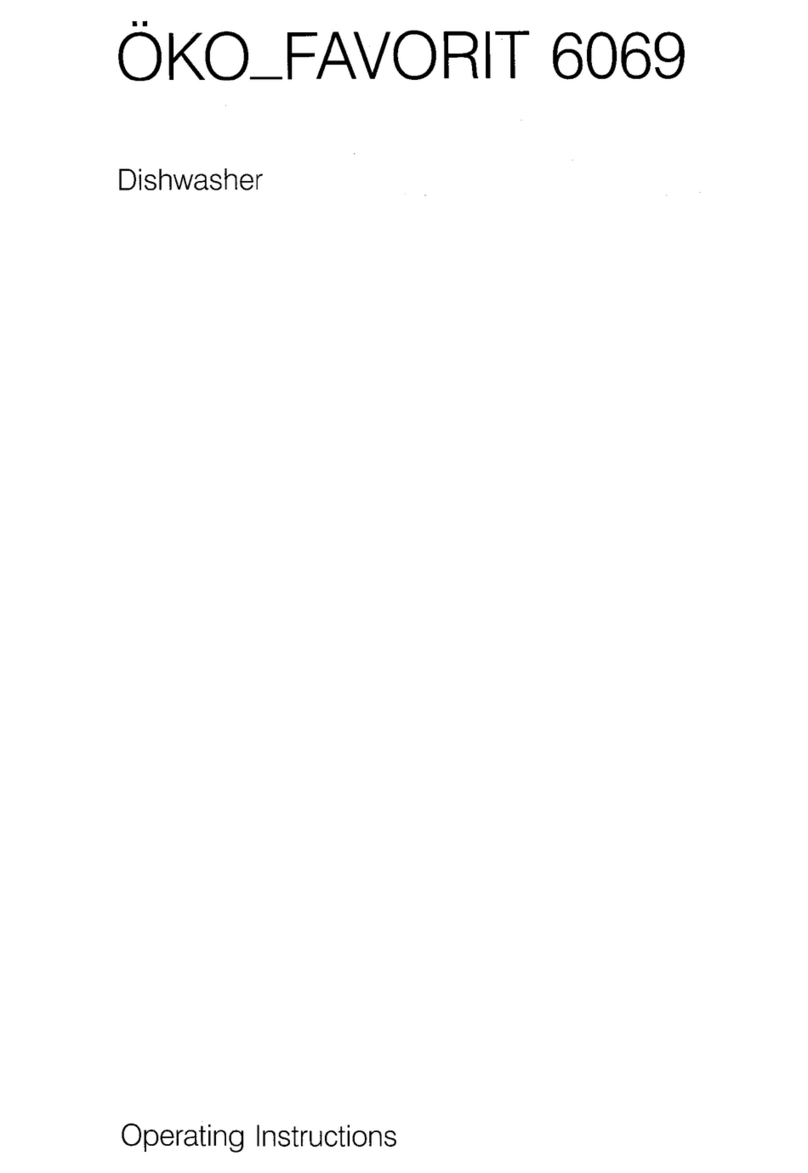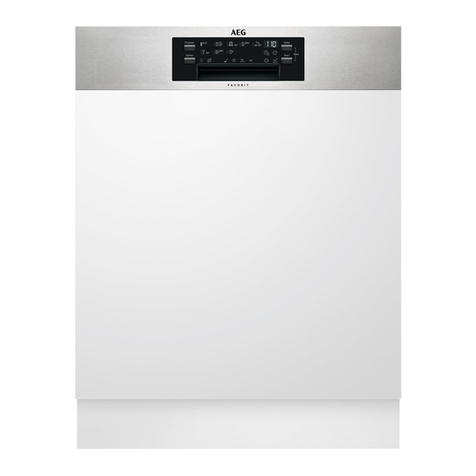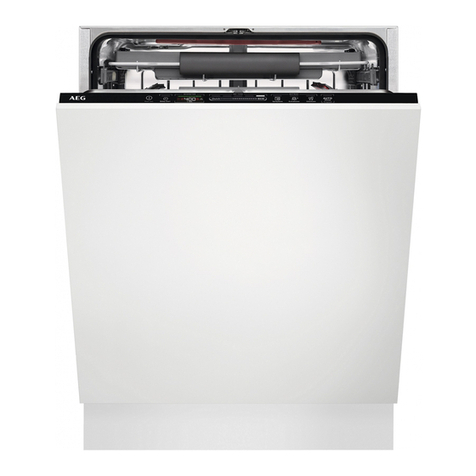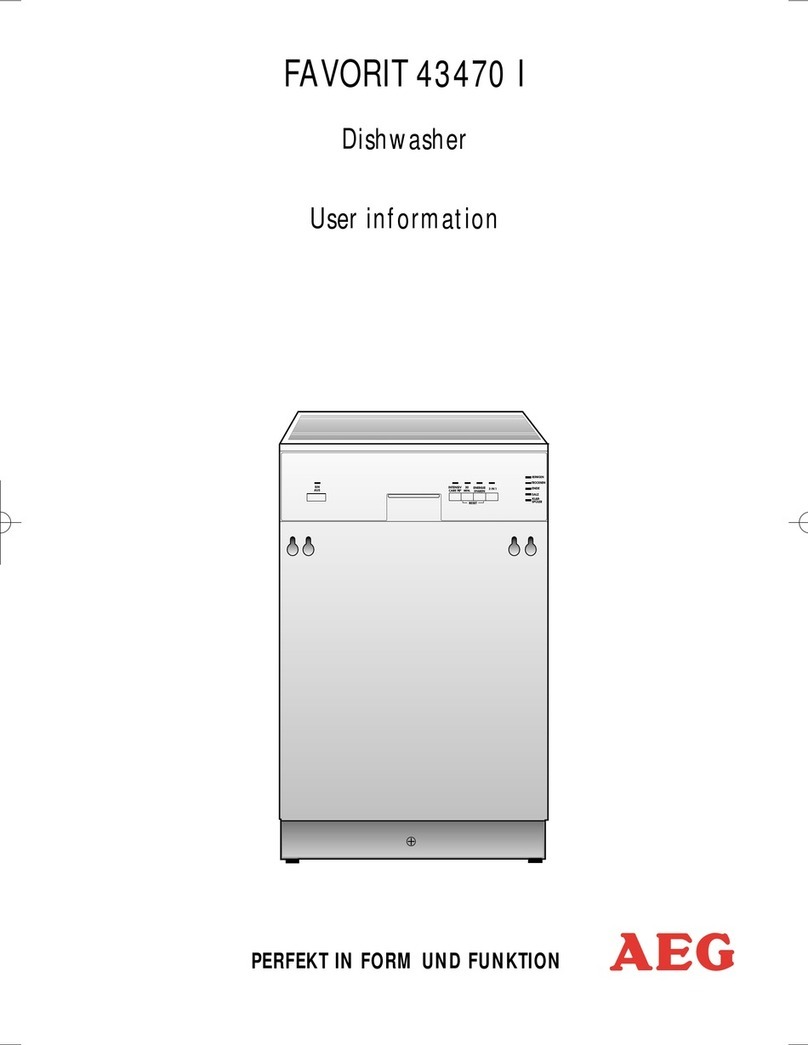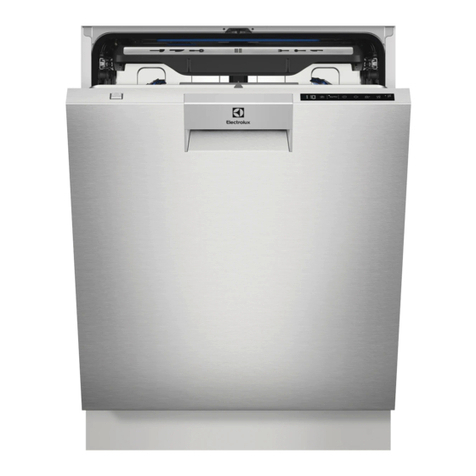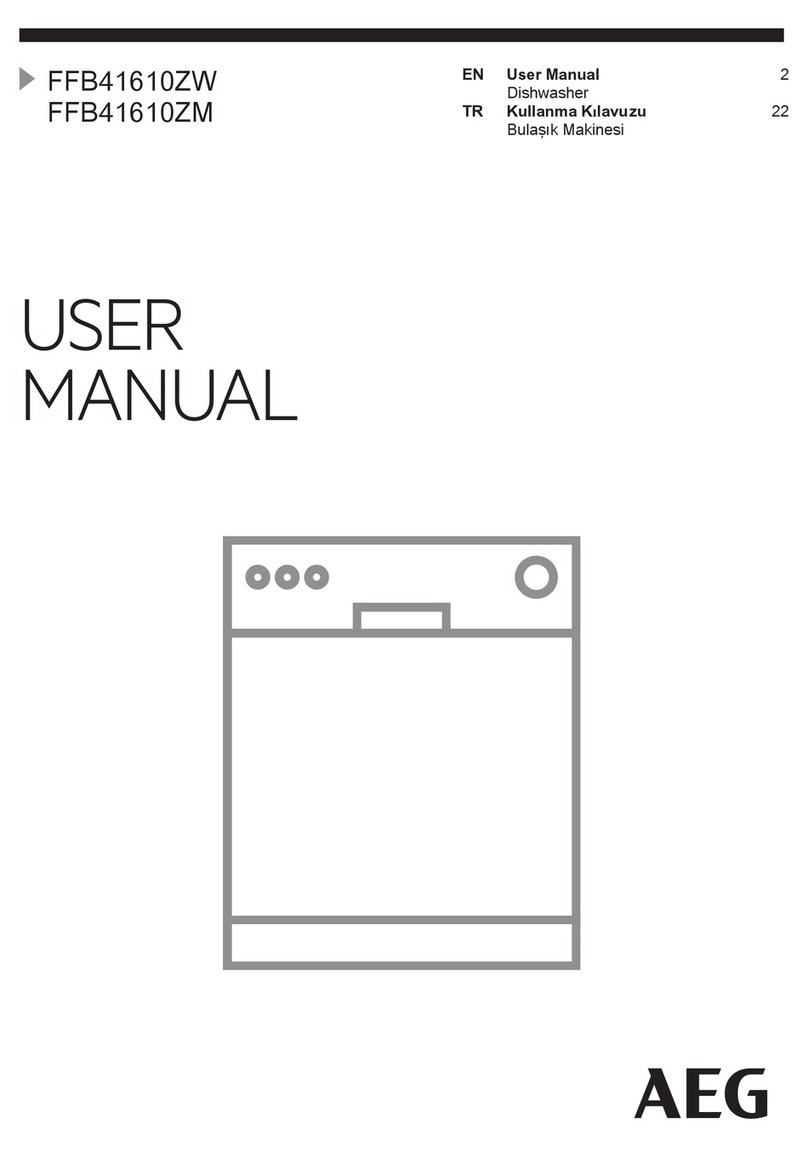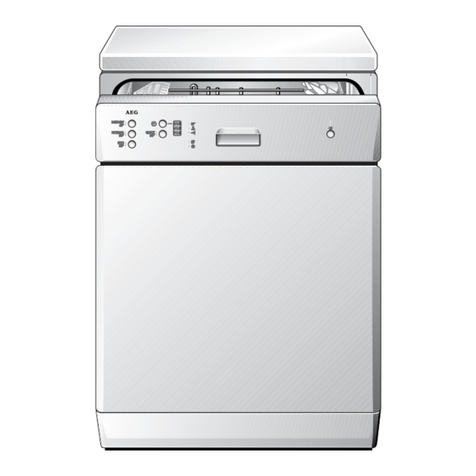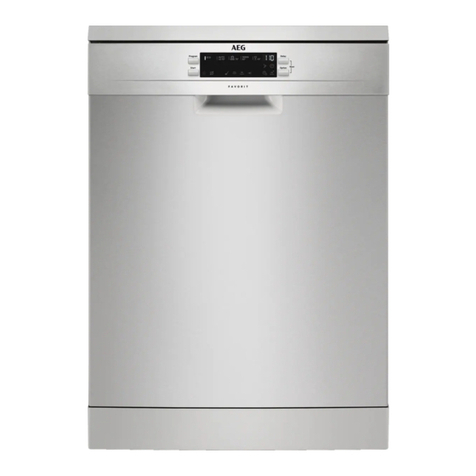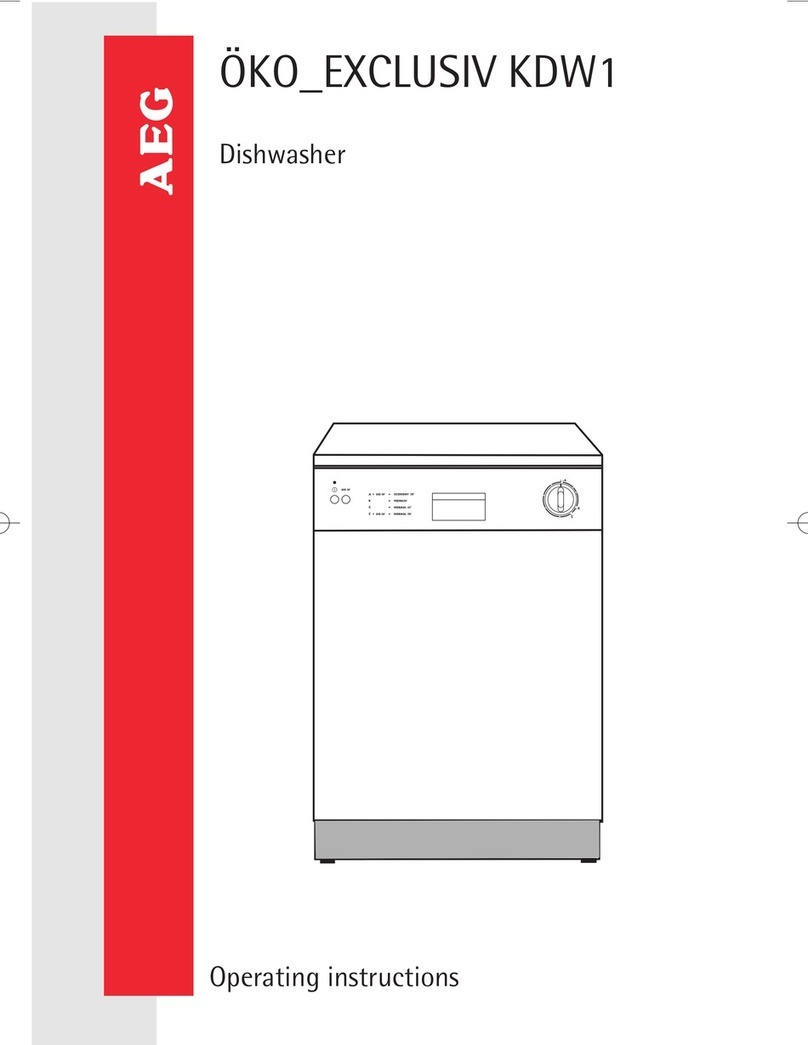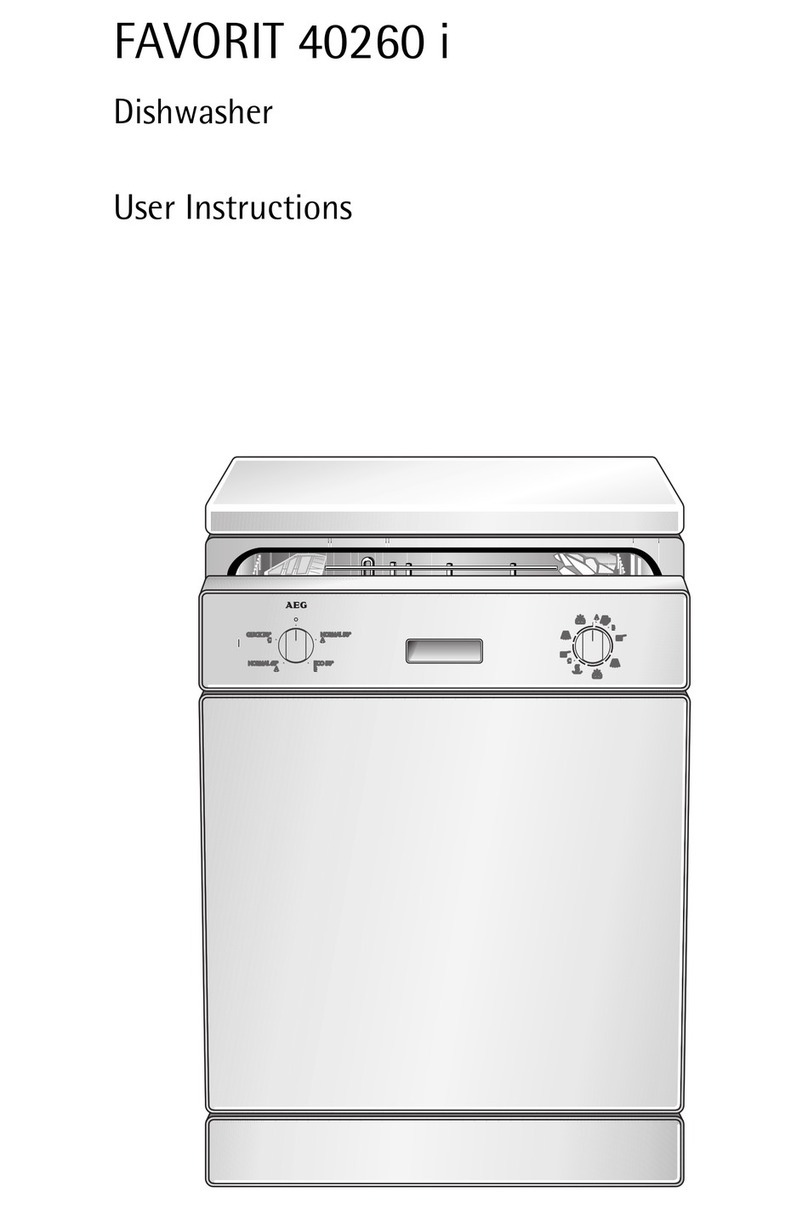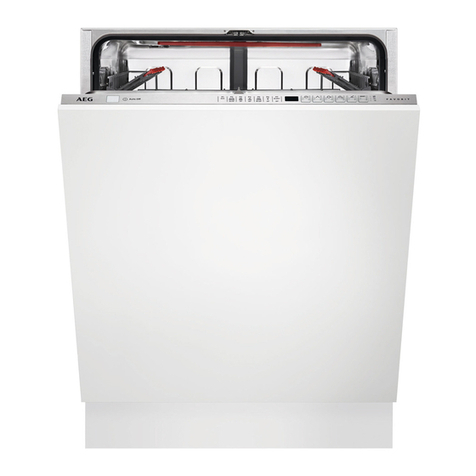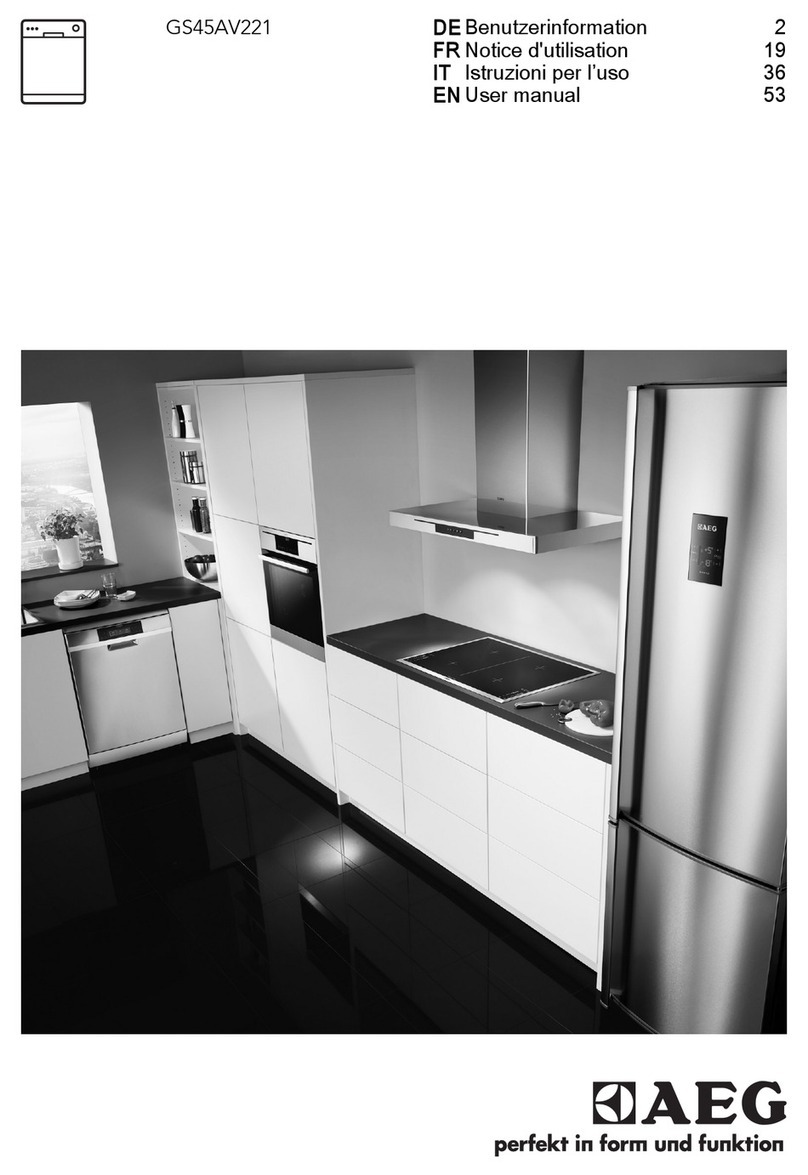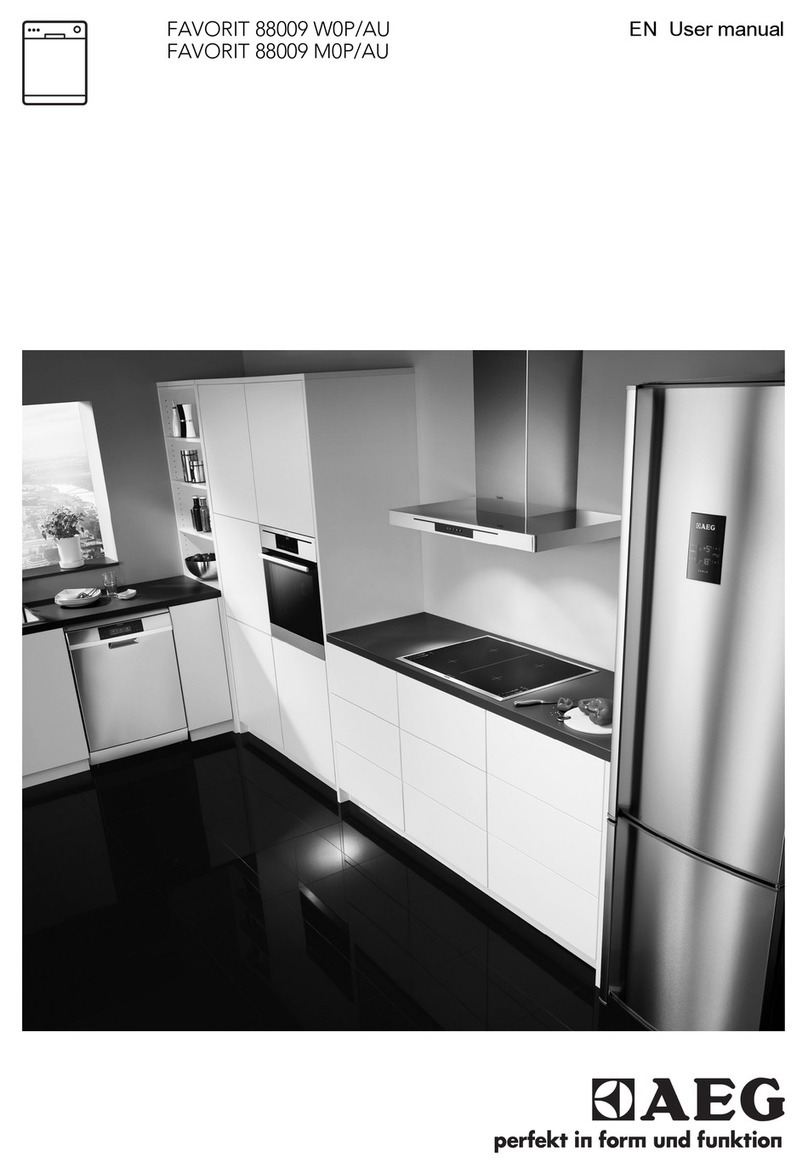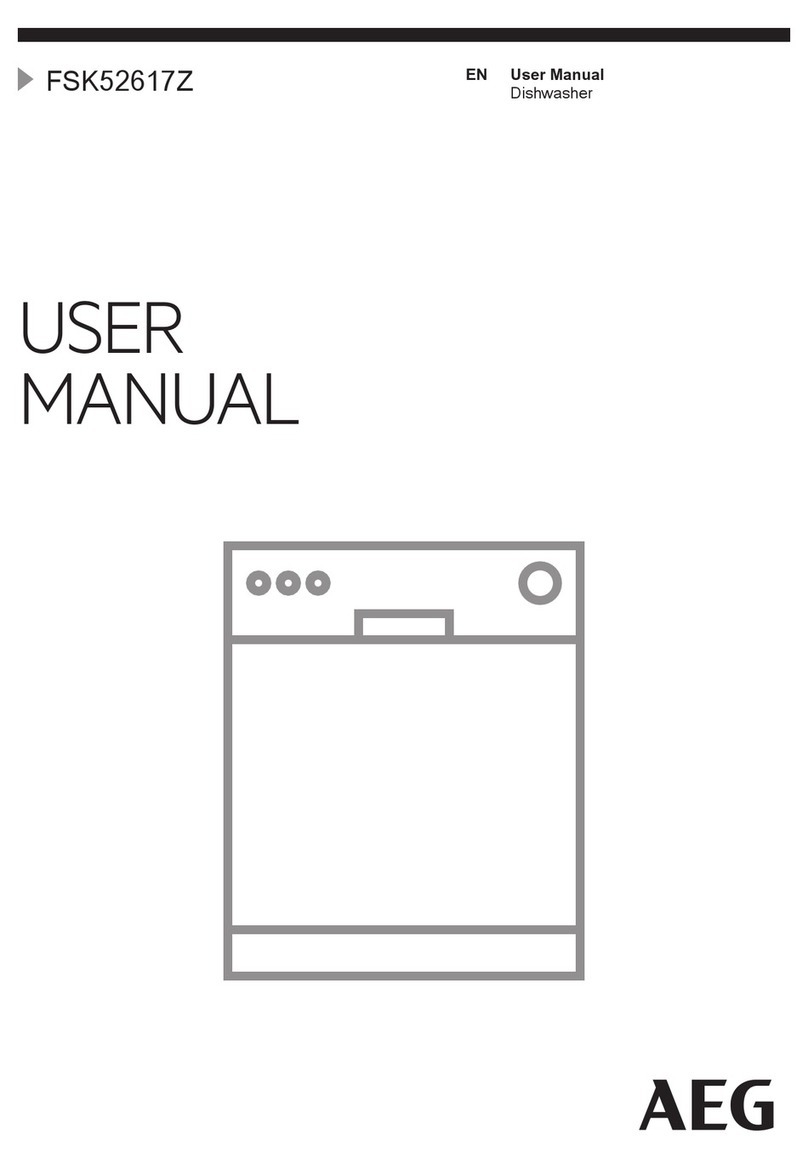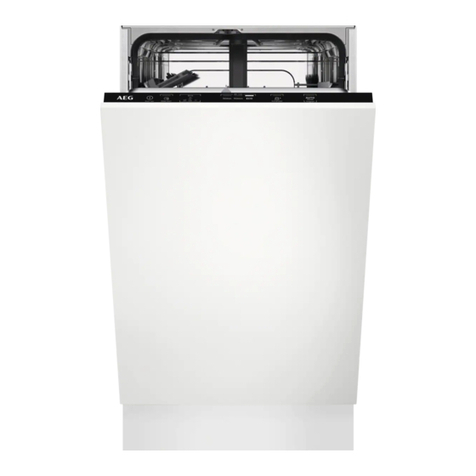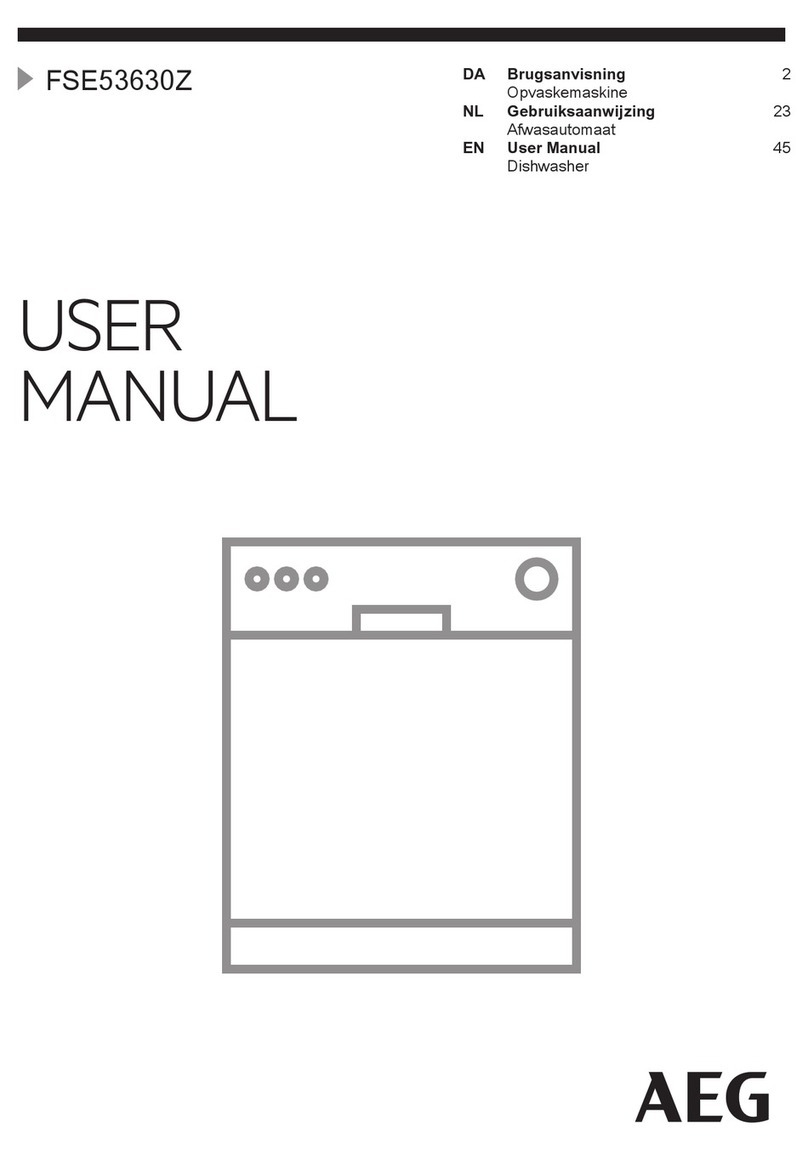5Operating Instructions
Operating Instructions
1Safety
Prior to using for the first time
•Follow the ”Instructions for installation and connection”.
Correct Use
•The dishwasher is only intended for washing domestic dishes.
•Additions or modifications to the dishwasher are not permitted.
•Use only special salt, detergent and rinse aid suitable for domestic dishwash
ers.
•Do not put any solvents in the dishwasher. This could cause an explosion.
Child Safety
•Keep packaging away from children. There is a risk of suffocation.
•Children often do not recognise the hazards associated with electrical appli
ances. Don’t allow children to use the dishwasher unsupervised.
•Make sure that children and pets don’t climb into the dishwasher. Could en
danger life!
•Dishwasher detergents can cause chemical burns to the eyes, mouth and
throat. Could endanger life! Comply with the safety instructions of the dish
washer detergent manufacturer.
•The water in the dishwasher is not for drinking. Risk of chemical burns.
General Safety
•Repairs to the dishwasher are only to be carried out by qualified/authorised
service engineers.
•When the dishwasher is not being used, switch it off and shut off the water
tap.
•Never unplug the appliance by pulling on the cable. Always pull the plug.
•Ensure that the door of the dishwasher is always closed when it is not being
loaded or unloaded. In this way you will avoid anybody tripping over the open
door and hurting themselves.
•Never sit or stand on the open door.
•If the dishwasher is located in a room where there may be a frost, remove the
connection hose from the tap after each use of the dishwasher.
